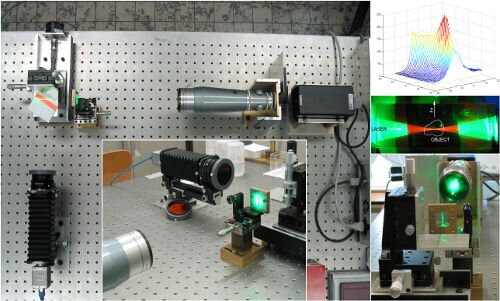Fluorescent optical-sectioning tomograph
Our optical-sectioning microscope creates virtual sections through biomedical specimens of several tens of millimeters with 5 µm resolution. Specimens need to be decalcified, dehydrated and cleared using the Spalteholz procedure. Depending on the specimen, images can be obtained using auto-fluorescence or Rhodamine staining.
The VFOST (virtual fluorescence optical-sectioning tomography) or HROPFOS (high-resolution orthogonal-plane fluorescence optical-sectioning microscopy) device at our laboratory has the possibility to work in line-scanning mode. We operate with a green 532 nm neodymium laser [DPGL-2050 Photop Suwtech Inc] and a blue 473 nm laser [DPSS MBL 100mW CNI laser Ltd], a CCD camera [FOculus FO442B FireWire], and two high-resolution micro-translation stages [M112.1 PI Polytec] with DC-motor controllers [C862 Mercury II PI Polytec].
The laser sheet is created with custom-made doublet cylindrical lenses of focal length 80 mm.
For detailed description:
J.A.N. Buytaert and J.J.J. Dirckx, ‘Design and quantitative resolution measurements of an optical virtual sectioning 3-D imaging technique for biomedical specimens, featuring 2µm slicing resolution’, Journal of Biomedical Optics 12(1): 014039(1-13), 2007.
doi:10.1117/1.2671712
